Energy Worldwide - Wind Energy - Geothermal Energy - Biomass Energy
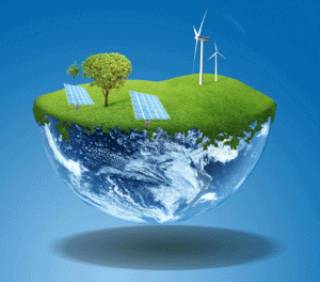
The consumption of energy by humankind has evolved over the ages. It began with the invention of fire, man relied on wood burning to cook and to provide warmth and light for millions of years. As civilisation evolved, the needs for energy became greater and other sources were sought. In the long search, man discovered coal. Over the years coal provided much greater resource for energy, encouraging man to push its use into further applications.
A major leap in the nineteenth century was achieved by the discovery of oil in the Middle East. This unfortunate discovery eventually led to TWO World wars as the leading industrial nations attempted to dominate the world market and to secure the energy supply for their huge manufacturing industries.
The oil crises due to the Arab-Israeli war in 1973 resulted in tripling of oil prices, this was a major shock for non producing countries, particularly in Europe, on one hand it has put tremendous increase on the energy consumer’s budget; The discovery of oil pushed the competition for manufacturing beyond the industrialised countries own borders. This competition for shares in the exports market put so much strain on the consumption of fossil fuel. Hubbert put foreword his caution when he published his famous curve (1956), Figure 1.2. I t is clear that the oil reserves of the world are consumed unsustainably and will be exhausted within this century. Humans have to find a new source or sources of energy to replace oil.
However, on the positive side, the depletion of oil can be considered as a major advantage to humankind and the environment, it will force consumers to reduce the excessive consumption of energy, it will help man to review manufacturing processes and attempt to increase energy efficiency, and probably it has already pushed governments to search for newer sources of energy. Substantial funds are allocated for the research into renewable resources such as Hydropower, wind turbines and solar energy. Energy consumption world-wide has continued to rise, it is estimated that in 1900, the world consumption was around 22 EJ and by 1960 it rose to 128 EJ; this reached 564 EJ in 2000.
The continued increase in population and the associated increase in manufacturing industry to cater for greater dependence of man on energy driven devices and the culture of multi-car ownership has put even greater importance for energy. It is interesting to note that the energy consumption for individuals have increased by 10 folds over the century mentioned above. This is another proof that we are becoming too excessive and becoming too dependant on energy far greater than we did before.
Labels
solar panelsrenewable energysolar energygreen energyrenewable energy sourcesalternative energywind energygeothermal energywind turbinesustainable energysources of energybiomass energyFarming Principle: Deep Soil Preparation
Looking at GB as a three-legged stool, deep soil preparation is one of the legs. Deep soil preparation builds soil and soil structure by loosening the soil to a depth of 24 inches (60 cm). Ideal soil structure has both pore space for air and water to move freely and soil particles that hold together nicely.

Smart Home Ecosystem - Smart Home Automation - Smart Home Security - Smart Home Technology
The outer-most level corresponds to the individual devices and sensors that consumers interact with. Several candidates are vying for the role of a leader introducing smart home services to the mass market.

Solar Energy Systems - Solar Modules - Solar Electric System Design - Solar Power
The heart of a photovoltaic system is the solar module. Many photovoltaic cells are wired together by the manufacturer to produce a solar module. When installed at a site, solar modules are wired together in series to form strings. Strings of modules are connected in parallel to form an array.
Solar Energy Systems - Array Mounting Racks - Solar Ray - Solar Panel - PV Racks and Mounts
Arrays are most commonly mounted on roofs or on steel poles set in concrete. In certain applications, they may be mounted at ground level or on building walls. Solar modules can also be mounted to serve as part or all of a shade structure such as a patio cover. On roof-mounted systems, the PV array is typically mounted on fixed racks, parallel to t

Solar Energy Systems - Grounding Equipment
Grounding equipment provides a well-defined, low-resistance path from your system to the ground to protect your system from current surges from lightning strikes or equipment malfunctions. Grounding also stabilizes voltages and provides a common reference point. The grounding harness is usually located on the roof.
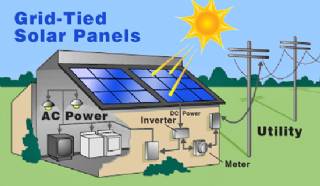
Solar Energy Systems - Solar Inverter - Solar Panel Inverter
Most grid-connected inverters can be installed outdoors, while most off-grid inverters are not weatherproof. There are essentially two types of grid-interactive inverters: those designed for use with batteries and those designed for a system without batteries.
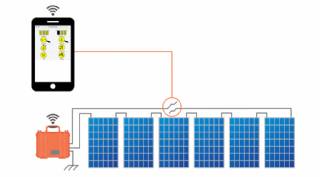
Solar Energy Systems - Solar Disconnects
Automatic and manual safety disconnects protect the wiring and components from power surges and other equipment malfunctions. They also ensure the system can be safely shut down and system components can be removed for maintenance and repair.
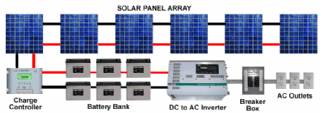
Solar Energy Systems - Solar Battery Bank
Batteries store direct current electrical energy for later use. This energy storage comes at a cost, however, since batteries reduce the efficiency and output of the PV system, typically by about 10 percent for lead-acid batteries. Batteries also increase the complexity and cost of the system.

Solar Energy Systems - Solar Charge Controller
A charge controller, sometimes referred to as a photovoltaic controller or battery charger, is only necessary in systems with battery back-up. The primary function of a charge controller is to prevent overcharging of the batteries. Most also include a lowvoltage disconnect that prevents over-discharging batteries. In addition, charge controllers pr
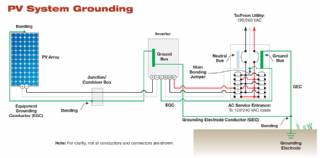
Solar Energy Systems - The NEC and PV Systems
Solar PV systems must be installed in accordance with Article 690 of the National Electric Code, which specifically deals with PV systems, as well as several other articles of the NEC that pertain to electrical systems in general. When there is a conflict between NEC 690 and any other article, NEC 690 takes precedence due to the unique nature of PV